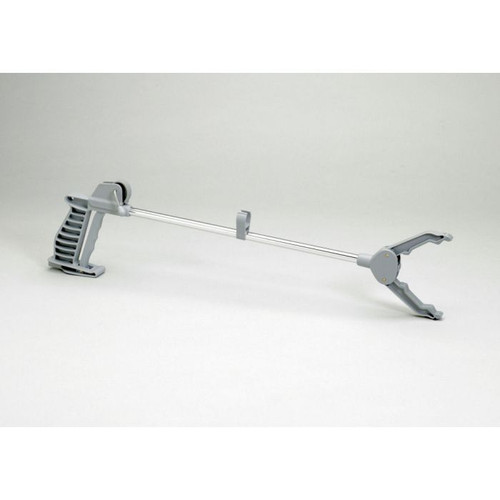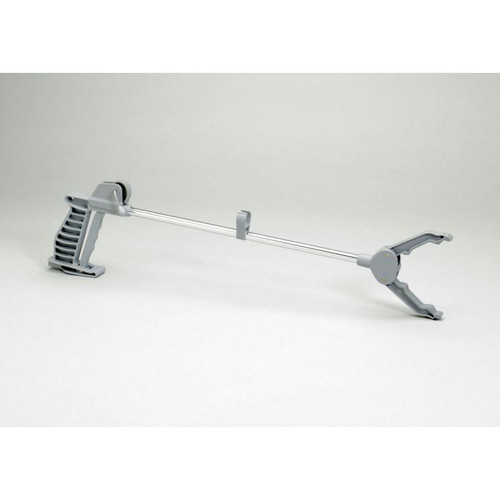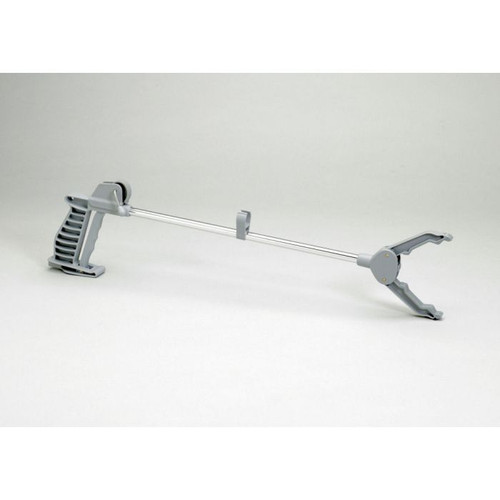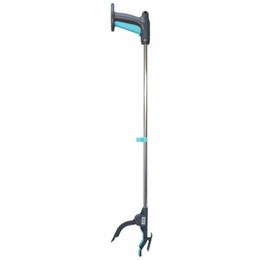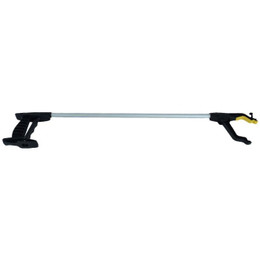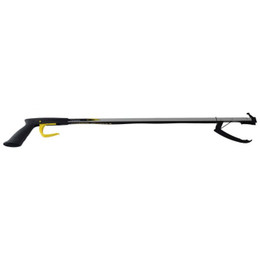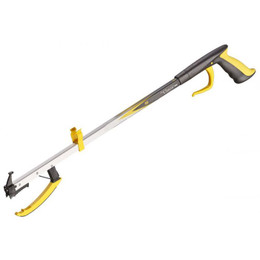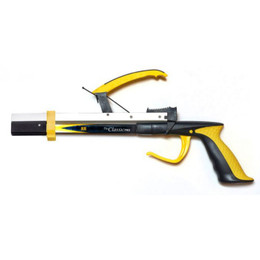Product Description
This incredibly useful Reacher Grabber is an ideal household aid for elderly or disabled individuals. Whether at home, in the garden or out and about, it will make reaching or grabbing items a straightforward task without any need to bend or strain. The sculptured, twin jaws deliver superb grip and the large handle is easy to operate even for those with weakened finger strength. There is a useful magnet attached to the jaw which means that items such as pins and paper clips can be collected with ease. It also boasts a handy removable stick clip so that it can be attached to wheelchairs and walking frames making it highly portable. This excellent mobility aid is available in two different lengths: 610mm or 750mm.
Reacher Grabber Information:
- Reacher Grabber colour: Grey
- Highly functional and useful reaching aid
- Provides excellent value for money
- Ideal for elderly and disabled users
- Can retrieve and reach a wide variety of items
- Twin gripping jaws provide maximum grip
- Lightweight and easy to operate
- Useful magnetic head
- Removable stick clip
- Two lengths available: 610mm (24") or 750mm (30")
What are grabbers used for?
Grabbers, also known as reachers or grabber tools, are handheld devices designed to help individuals with limited mobility or reach extend their reach to pick up objects. They typically consist of a long pole with a gripping mechanism at one end, operated by a trigger or squeeze handle. Here's what grabbers are commonly used for:
- Picking up items: Grabbers allow individuals to pick up objects from the floor, shelves, or other out-of-reach places without the need to bend over or strain themselves.
- Reaching high objects: For items placed on high shelves or cabinets, grabbers provide the extra reach needed to retrieve them safely without the risk of climbing on furniture or ladders.
- Assisting with dressing: Grabbers with specialised attachments, such as hooks or clips, can help with tasks like pulling up pants, reaching for clothing items, or putting on socks and shoes.
- Improving independence: By extending their reach, grabbers empower individuals with mobility challenges to perform daily tasks independently, reducing the need for assistance from others.
- Enhancing safety: Using a grabber can prevent accidents and injuries associated with reaching or bending improperly, particularly for older adults or individuals with mobility issues.
Overall, grabbers serve as valuable assistive devices that promote independence, safety, and convenience for individuals with limited reach or mobility.
What is the purpose of a reacher?
The purpose of a reacher, also known as a grabber or reaching tool, is to help individuals extend their reach and grasp objects that are out of arm's length or in difficult-to-reach places. These devices typically consist of a long pole with a gripping mechanism at one end, operated by a trigger or squeeze handle. The primary functions of a reacher include:
- Picking up objects: Reachers allow individuals to grasp and retrieve items from the floor, high shelves, or other locations without the need to bend over, stretch, or climb.
- Assisting with mobility: For individuals with mobility limitations or disabilities, reachers provide a means to access objects and perform tasks independently, reducing reliance on carers or assistance from others.
- Enhancing safety: By enabling individuals to avoid awkward or potentially hazardous positions, reachers help prevent falls, strains, and other injuries that may result from overreaching or bending improperly.
- Promoting independence: Reachers empower individuals to maintain their independence and carry out daily activities such as dressing, cooking, and household chores without constant assistance.
- Facilitating rehabilitation: In rehabilitation settings, reachers may be used as part of therapy programmes to improve range of motion, coordination, and functional abilities in individuals recovering from injuries or surgeries.
Overall, reachers serve as valuable assistive devices that improve accessibility, safety, and quality of life for people with mobility challenges or limited reach.
